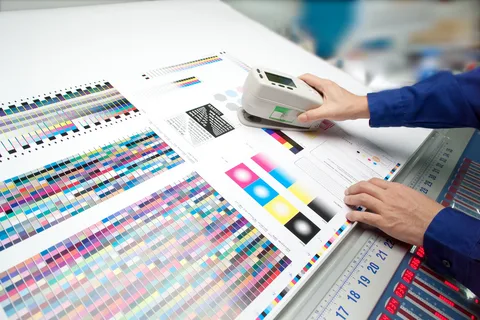In today’s fast-paced digital landscape, it’s easy to overlook the importance of traditional marketing methods. However, print design continues to play a vital role in branding, advertising, and communication strategies for businesses of all sizes. While digital marketing offers immediacy and global reach, print design delivers a tangible, lasting impact that connects with audiences in a more personal and trustworthy way.
What is Print Design?
Print design refers to the creation of visually appealing materials intended for printed formats. These include brochures, business cards, posters, flyers, magazines, packaging, and more. Unlike digital design, which is optimized for screens, print design focuses on high-resolution graphics, color accuracy, and print-ready file formats.
A successful print design must not only be aesthetically pleasing but also functional and aligned with the brand’s identity. From typography to layout and color schemes, every element must work together to create a cohesive message that resonates with the target audience.
Why Print Design Still Matters
Despite the dominance of digital media, print design remains a powerful tool for communication. Here’s why:
1. Tangible and Trustworthy
People often perceive printed materials as more credible and permanent than digital ones. A well-designed brochure or business card can leave a lasting impression and convey professionalism. Unlike digital ads, which can be scrolled past in seconds, print materials are physically held, increasing the chances of engagement.
2. Less Competition for Attention
Online platforms are flooded with ads and content vying for users’ attention. In contrast, print materials face less competition in physical spaces. A beautifully designed flyer or poster can easily stand out at an event, trade show, or on a bulletin board.
3. Enhanced Brand Identity
Print design helps reinforce brand identity through consistent use of logos, fonts, colors, and layouts. High-quality printed materials reflect the brand’s commitment to excellence and attention to detail.
4. Ideal for Local Marketing
For businesses targeting a local market, print design can be more effective than digital channels. Door hangers, direct mail campaigns, and local magazine ads provide targeted visibility and reach customers in specific geographic areas.
Key Elements of Effective Print Design
To make the most of your print materials, consider these essential components:
– Typography
Fonts should be legible and appropriate for the brand. A balance between decorative and readable text enhances clarity and appeal.
– Color Scheme
Colors evoke emotion and drive brand recognition. Use a consistent palette that aligns with your brand identity and print standards (CMYK vs. RGB).
– Imagery
High-resolution images and illustrations can make or break a design. Ensure all visuals are print-quality and support the message you’re conveying.
– Layout and Composition
A clean, organized layout helps guide the reader’s eye and emphasizes key points. Use grids and hierarchy to structure the content effectively.
– Call-to-Action (CTA)
Every piece of print design should have a clear purpose. Whether it’s visiting a website, calling a number, or attending an event, the CTA should be prominent and persuasive.
Print Design in Marketing Campaigns
Integrating print design into your marketing strategy can elevate your campaigns. Consider combining digital and print for a multi-channel approach. For example, a printed flyer with a QR code can direct users to your website or social media. This creates a seamless user experience and bridges the gap between offline and online engagement.
Custom packaging, branded merchandise, and printed catalogs are also excellent tools to showcase your products and services while enhancing customer loyalty.
Choosing the Right Print Design Partner
Professional print design requires both creative and technical expertise. When selecting a design partner or agency, look for:
- A strong portfolio of past work
- Experience with different print formats
- Understanding of print production processes
- Ability to align designs with your brand strategy
Investing in quality print design can yield significant returns by boosting brand visibility and credibility.
Final Thoughts
While digital media continues to evolve, print design remains an essential component of a comprehensive marketing strategy. Its tactile nature, trust-building potential, and ability to cut through digital noise make it invaluable for brands looking to make a lasting impression.
Whether you’re launching a new product, promoting an event, or building brand awareness, don’t underestimate the power of well-executed print design. By combining creativity with strategic thinking, your printed materials can capture attention, convey professionalism, and drive meaningful result.

